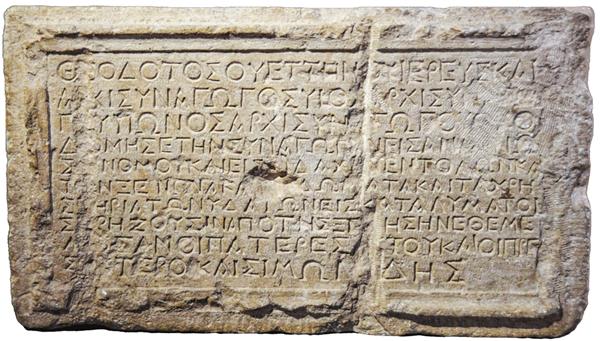The First Synagogues
Sidebar to: The Genesis of Judaism

The term “synagogue” usually conjures up images of organized prayer services. Communal prayer, however, was decidedly not characteristic of the earliest synagogues of the first century C.E. Instead, they are described by contemporary writers, such as Philo, Josephus, and the New Testament authors, as a place where Judeans would assemble (the Greek sunagoge means “place of assembly”) every Sabbath to listen to a public reading of the Torah followed by oral interpretation of the text. Rather than a place of worship, the first-century synagogue functioned as a kind of educational institution where ordinary Judeans would gather weekly to study the detailed laws of the Torah.
Synagogues were found throughout Judea—even in rural towns and villages—and in cities scattered throughout the Diaspora. Evidence for the educational character of the institution comes not only from first-century writings but also from archaeology. At least ten excavated structures have been identified as first-century synagogues. These are public buildings whose interior walls are lined with tiered benches surrounding a central space, with a seating capacity capable of accommodating a large gathering of people. The architectural focus is toward the center of the room and suggests that the focus was on a speaker who stood in the middle of the hall—likely someone who read from a Torah scroll. The amphitheater-like design of the seating would have allowed everyone not only to listen, but also to engage in animated discussion about the text and its interpretation.
Already a library member? Log in here.
Institution user? Log in with your IP address.

